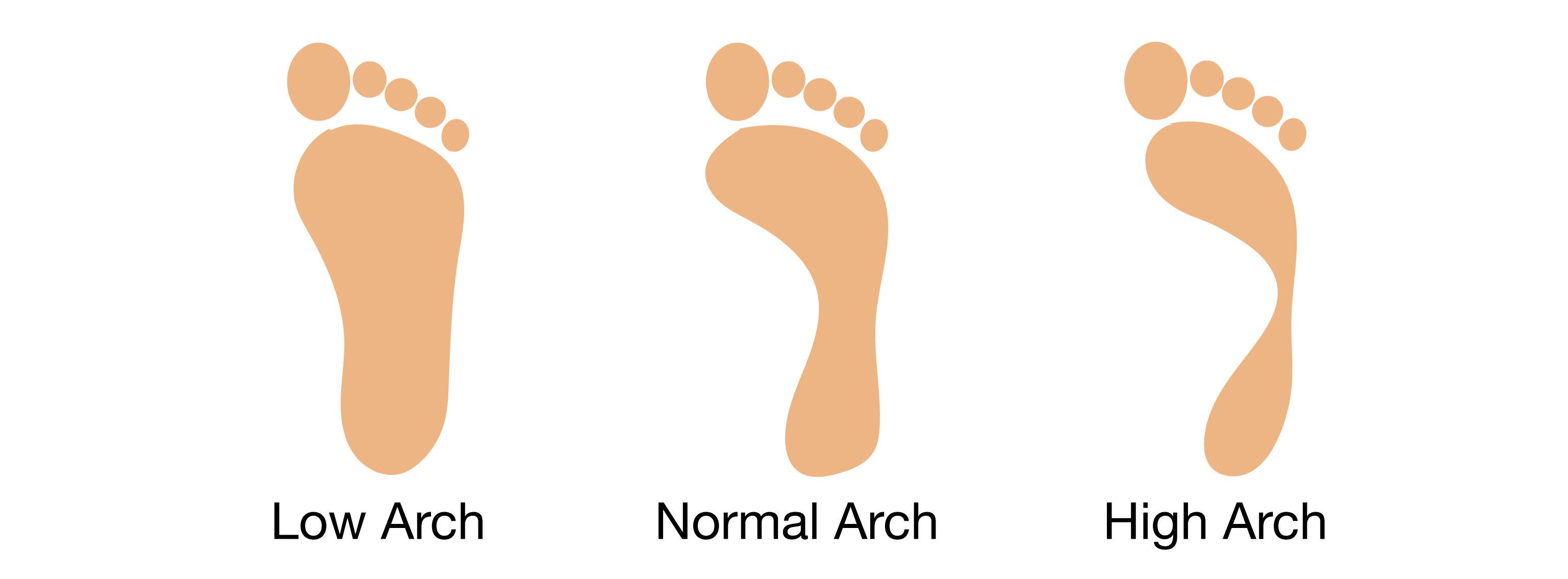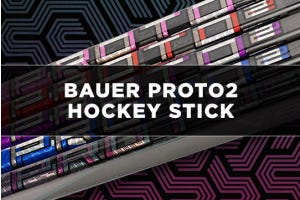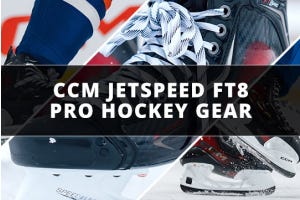Hockey Skate Sizing Guide & Chart - How to Fit Hockey Skates

Hockey skates are arguably one of the most important pieces of equipment any hockey player will need. The right size, style, and fit of your skate will allow you to improve your speed, accuracy, and shots – and mastering the art of skating means you can be one of the most dominant forces on the ice.
To help you start your journey toward becoming an exceptional skater and overall highly-skilled hockey player, you need to start with the right skates and the right fit – that’s why we put together this guide to help you find those perfect jets that will take your skating to the next level. Read on to learn everything you need to know about:
Hockey Skate Sizing
We see it all the time – players wearing the wrong-sized skates. And for new skaters who are just starting the game, skates that don’t fit properly can result in a nerve racking, discouraging experience that leaves them feeling inadequate or like they’ll never be good at the game. But a huge reason why skating is often so difficult for beginners simply comes down to the size of their skates – and usually the culprit is a skate that’s too large.
Skate Sizing Chart
A properly-fitted skate will actually be about 1 to 1.5 sizes smaller than your shoe size. Most manufacturers use this sizing formula. Yet, while this is the general rule, it’s important to keep in mind that not all skates are sized the same.
Typically, if you wear a men’s shoe size: 11, you should try skates in a size: 10 or 9.5
| Hockey Skate Sizing Chart | |||||||||||||
|---|---|---|---|---|---|---|---|---|---|---|---|---|---|
| Skate Size | 6.0 | 6.5 | 7.0 | 7.5 | 8.0 | 8.5 | 9.0 | 9.5 | 10.0 | 10.5 | 11.0 | 11.5 | 12.0 |
| US Men's Shoe Size | 7.5 | 8.0 | 8.5 | 9.0 | 9.5 | 10.0 | 10.5 | 11.0 | 11.5 | 12.0 | 12.5 | 13.0 | 13.5 |
| EUR Shoe Size | 40.5 | 41.0 | 42.0 | 42.5 | 43.0 | 44.0 | 44.5 | 45.0 | 45.5 | 46.0 | 47.0 | 47.5 | 48.0 |
| UK Men's Shoe Size | 6.5 | 7.0 | 7.5 | 8.0 | 8.5 | 9.0 | 9.5 | 10.0 | 10.5 | 11.0 | 11.5 | 12.0 | 12.5 |
| Actual Shoe Size as determined by a Branock Shoe Sizing Device. Sizing will vary by manufacturer. | |||||||||||||
If this is the first time you’re buying skates, or if you not sure what size you are in a particular brand, referencing a sizing chart is a good place to start.
Note: If you’re sizing for a child, it’s common to get a larger pair of skates for them to grow into. However, if you plan on going larger, it’s recommended you only go a half size bigger for that extra room – going any bigger will be very uncomfortable and can cause blistering and a premature breakdown of the skate boot.
Hockey Skate Toe Space
When you put your foot inside the skate, your toes should barely touch the toe cap without the skates being laced up. At first, this may seem like the skate is too small, but remember that when you fully lace up your skates and stand up, your heel will sit further back in the heel pocket, which will move your toes back just enough so they’ll no longer be brushing the inside of the toe cap. The result? A perfect fit!

Properly Fitted Skates
Beyond brand, style, or look, the single most important part in choosing skates – is THE FIT! Your skates need to fit properly in order for you to skate at your full potential. But what exactly makes a skate fit well?
There are two things you need to look at in terms of skate fit: size and boot construction.
Size
The reason skaters so often have the wrong-sized skate is usually due to the fact that they should buy a smaller skate than they would shoe, which seems counter-intuitive. But remember that the right-sized skate means you’ll be comfortable and safe when you’re on the ice, ultimately enhancing your skating performance – so stick with us as we try to convince you that yes, you should be buying a smaller skate than you would shoe.
TOO BIG: If your skates are too big, your foot will move inside and you won’t be able to skate as fast. You’ll also likely be in a skate that’s not very comfortable, and the chance of blistering and potential for injury are both greatly increased with skates that are too big.
TOO SMALL: If your skates are too small, your feet will cramp and the skate will be very tight uncomfortable, affecting your ability to skate fast and precisely.
Boot Construction
Boot construction is important when choosing your skates for a number of reasons. Skate manufacturers offer many different styles of skates that cater to virtually all foot shapes. These days, brands make skates that are deep and wide in one style, with a variation that’s narrow, with less volume in another. Some brands even carry variations in between those – so with a little bit of time (and perhaps trying on a few different brands and models), you can find the best skate, with the perfect fit, for your foot.
Pro Tip: if your foot is wide, you want to find a skate model that’s specifically for wide feet. And try to resist the urge to just wear what your favorite player wears or endorses, unless that happens to be the right style for your foot!
Finding Your Fit
Finding a skate that will accommodate your foot in three different areas is key. You want to look at:
- the width of the forefoot
- the depth of the heel
- the volume of your overall foot – note: volume isn’t the size of the skate, but more about the dimensions of the boot. Manufacturers offer so many different styles, it’s generally best to figure out what type of foot you have, and then look at skates that will accommodate your foot profile.

Hockey Skate Width
Once you’ve determined what sized skate you need, you also need to know what your width ratio is. Width ratio tells you how wide and what the depth of your foot is. You find your width ratio by dividing the length of your foot by the width. This gives you a good idea of how wide your foot is in comparison to how long it actually is.
A general idea of how width ratio relates to skate size follows:
TRADITIONAL – WIDTH RATIO OF LESS THAN 2.5
- FOREFOOT: WIDE
- HEEL: DEEP
- VOLUME: HIGH
CONTURED – WIDTH RATIO BETWEEN 2.5 – 3.0
- FOREFOOT: STANDARD
- HEEL: STANDARD
- VOLUME: MEDIUM
TAPERED – WIDTH RATIO GREATER THAN 3.0
- FOREFOOT: NARROW OR SLIGHTLY NARROW
- HEEL: SHALLOW/NARROW
- VOLUME: LOW
Forefoot
Having a skate that’s appropriate for the width of your forefoot will ensure you buy a skate that’s comfortable. The forefoot should be snug, but not too tight. If you have naturally wide feet, you will likely need a traditional skate, which will have a wider forefoot. Width ratio works the opposite in terms of forefoot – the smaller your ratio, the wider forefoot you’ll want.
Heel
The heel of a hockey skate is in relation to the depth of that part of the skate boot. Deep, standard, and narrow are heel options. The heel will hold the back of your foot in place inside the boot, so you want to be sure your heel is "locked" into the boot. Your heel should not slip at all, so be sure you try on models that are designed for your specific heel type.
Volume
When talking about hockey skates, volume actually doesn’t have to do with the size of the skate, but rather the dimensions of the boot. A wider foot will need a high-volume skate, whereas if you have narrower feet, you should look for a low-volume skate.
If you have a naturally-wide foot, you should try on a skate with a traditional fit. You don’t want to try on a boot built for a thin, tapered foot if you have larger and wider feet.
Anatomy of a Hockey Skate
Now that you have an idea of the size and fit you need for your particular feet, you want to choose a skate within a lineup based off stiffness, key features, and cost. With such a huge variety of skate options in fit and material, it’s important to know the anatomy of a hockey skate. This way, you can identify and differentiate each specification in models of skates. Even if you plan on buying the newest top-of-the-line skate out on the market, that particular skate may not be the best choice for you. Let’s take a look at the components that make up a skate.

See what we mean? These skates may all look the same, but they really aren’t! Each one is set at a different price and varies widely in the types of material and technology put into them according to a player’s weight and skill level.
Hockey Skate Components
A hockey skate is built with 3 main pieces:
- a plastic holder
- a steel runner
- a skate boot
The style and construction of holders and runners will vary depending on the manufacturer and brand, but they all serve the same purpose: to provide free movement on the rink.
Holder
The holder is one of the two most basic parts of the skate-makeup-trio. It’s a molded plastic piece that’s riveted to the bottom of the skate boot. Steel runners are attached to the holders, usually with screws or some other fastening device or mechanism.
Runner
The second of the two basic components. The runner is what you may think of as the “blade” on the skate. It’s the steel strip that actually makes contact with the surface of the ice. Runners are securely inserted into the molded plastic holder that’s affixed to the boot.
Boot
The skate boot is exactly what it sounds like: the “shoe-part” of the skate. Boots are highly complex in terms of the technology that’s used when designing and manufacturing them. They’re composed of several pieces, all made from different types of materials that range in quality and affect the price point.
Pay close attention to the materials used when deciding on which skate you’ll buy. Key features of a skate boot are:
- the quarter package
- ankle padding
- heel support
- tongue
- outsole
- footbed
- the liner (inside the boot)
As you play more hockey, you’ll become more familiar with skates. Ultimately, you’ll get to know what set of features are most beneficial to your skating style, and you’ll learn what to look for when purchasing your next set of skates.
Get Comfortable with Your Insole
If you’re not sure what type of arch you have, determining this is relatively simple with an easy test. All you need is a glass of water, a pan, and a piece of cardboard.
- Place the cardboard and pan on a flat surface on the ground.
- Pour the water inside the pan, remove your shoes/socks, and place your foot inside of the pan.
- Lift your foot out of the pan and make sure water isn’t dripping everywhere – you want just enough so the bottom of your foot is wet.
- Step on the piece of cardboard as if you were standing normally.
- Step off the cardboard and inspect the wet imprint. What does your footprint look like?
Use the image below as an easy guide to determine if you have a low, normal, or high arch.

Knowing your arch type means you can have better support inside your skates. Buying an after-market foot bed designed specifically for your arch type will enhance the overall feel and fit of your skate. It adds more points of contact between the bottom of your foot and the insole/outsole of the skate, which will give you superior, more efficient energy transfer. It will also feel more comfortable and should help prevent the arch of your foot from cramping up when skating.
Hockey Skate FAQs
How do you fit kids for youth hockey skates?
Fitting youth hockey skates is simple. Youth skates should fit 1 – 1.5 sizes smaller than the child’s normal street shoes. Toes should barely touch the toe cap, and there should be a maximum of ¼" of space in the heel. When laced up, skates should feel snug, but not too tight. It’s OK to go up about a half size bigger, since little feet grow quickly, but don’t go any bigger than that or you risk blisters – not to mention, the boots are more likely to wear down more quickly.
Are ice skates the same size as shoes?
Ice skates are not the same size as street shoes. You should wear skates that are about 1 – 1.5 sizes smaller than the normal-size shoe you wear.
Do hockey skates run big?
Hockey skates do run big in comparison to street shoes. You want to find a pair that’s about 1 – 1.5 sizes smaller than your normal shoe size.
What is the width of a hockey skate blade?
The width of a regular hockey player’s skate blade (or runner) is about ⅛" wide. Note that goalie blades are generally wider than this.
How tight should hockey skates fit?
Hockey skates should be snug, but not uncomfortably tight. When unlaced, your toes should just barely touch the toe cap. When standing in your skates with them fully laced, you want your heel snug in the heel pocket, so your toes have a bit of space at the end.
What are the different fit types in hockey skates?
Hockey skates come in three basic fit types: tapered/narrow, contoured/anatomical, classic/comfort. There are benefits to each that relate to your foot’s instep, heel, toe, and volume.
What is the difference between lace styles?
Skate laces come in two different styles: waxed and non-waxed. Waxed laces can help you get your skates tighter.
What can I do about lace bite?
Even experienced players can end up with lace bite when breaking in a new pair of skates. Lace bite can happen when skates are tied too tightly, causing hot spots or blisters. Changing how you tie your skates or placing a gel pad over the issue are simple ways to fix lace bite.
Should I use soft or hard blade covers?
Blade covers come in both hard and soft styles, and while hard styles are great for younger players because they can walk on them across parking lots and rink lobbies without damaging their skates, the soft version is actually better in that the inner terrycloth liner absorbs moisture and water from melting ice, which prevents rusting.











